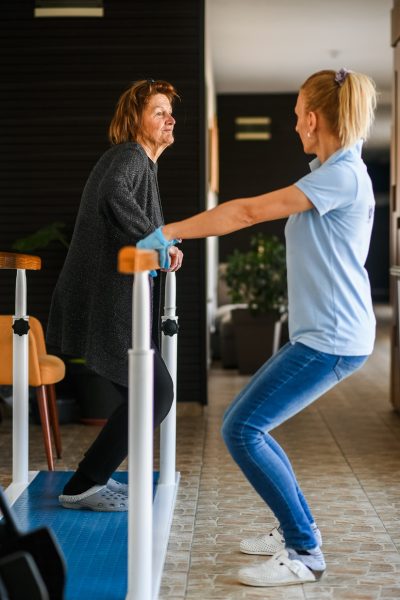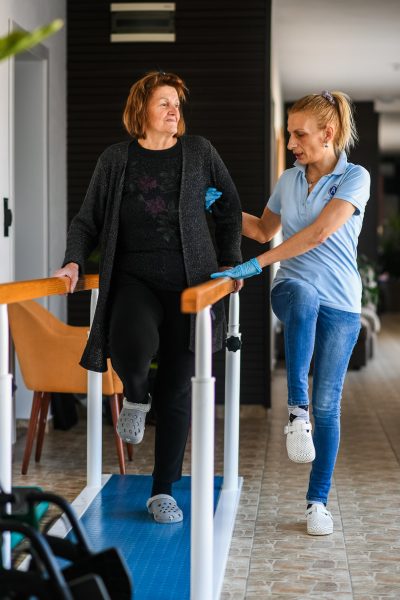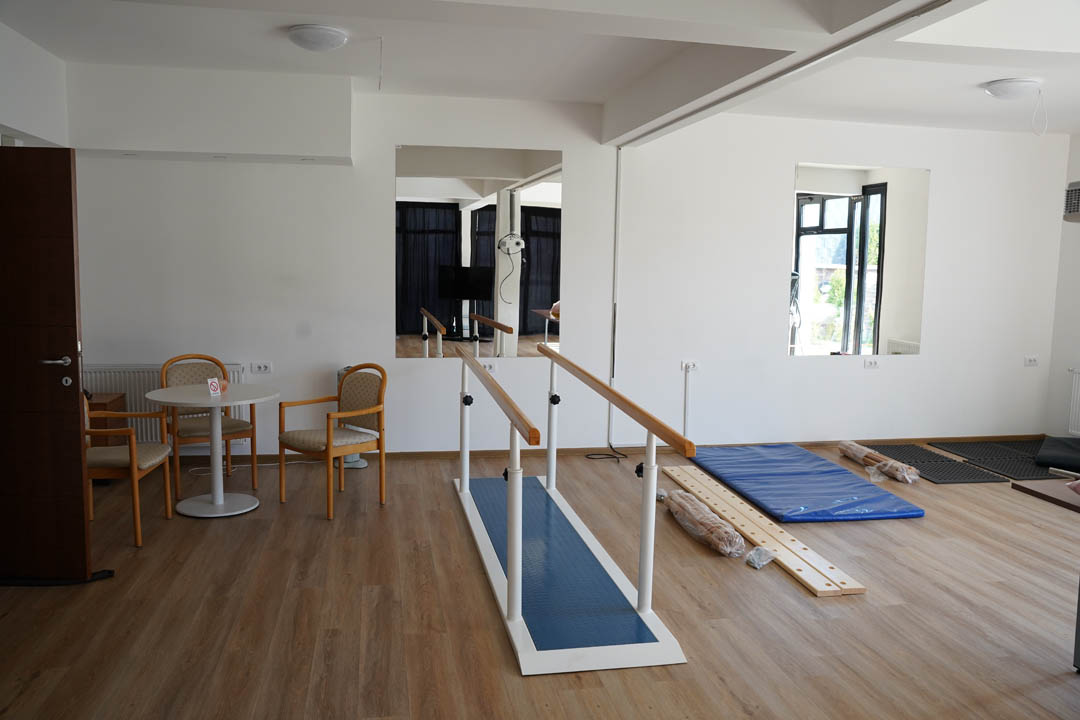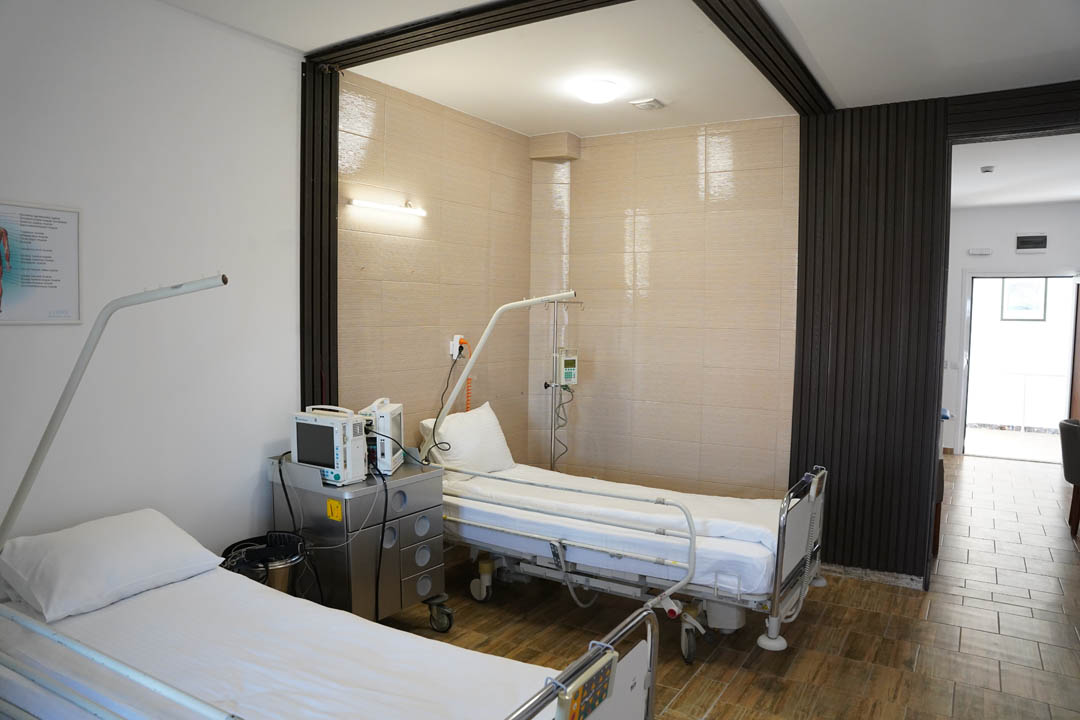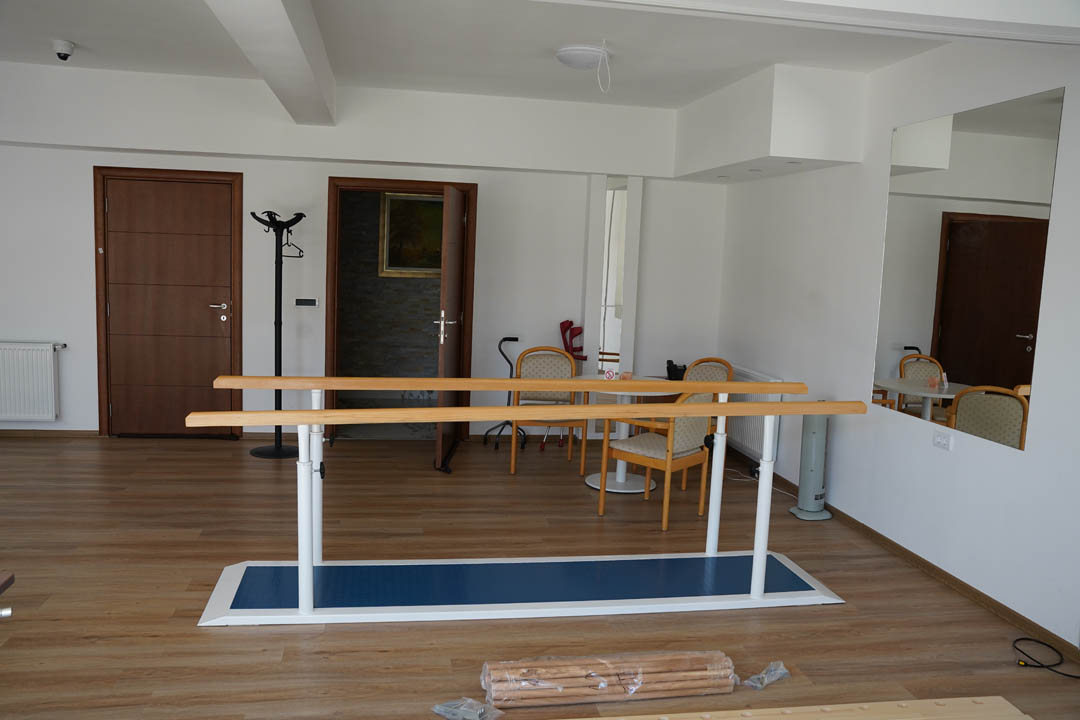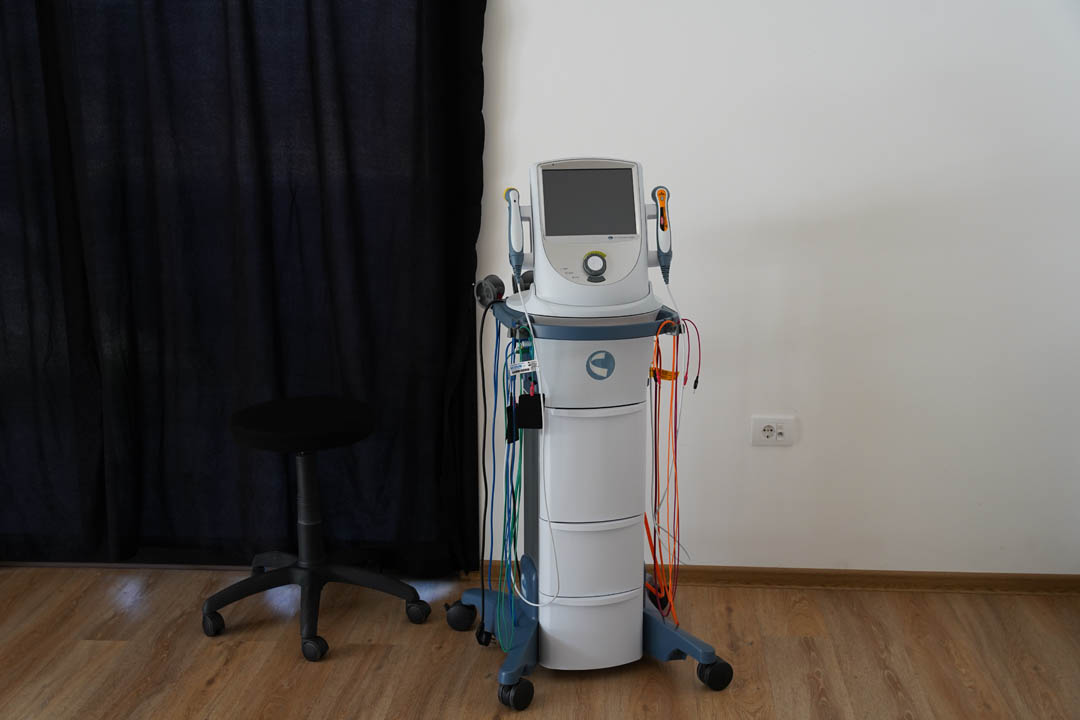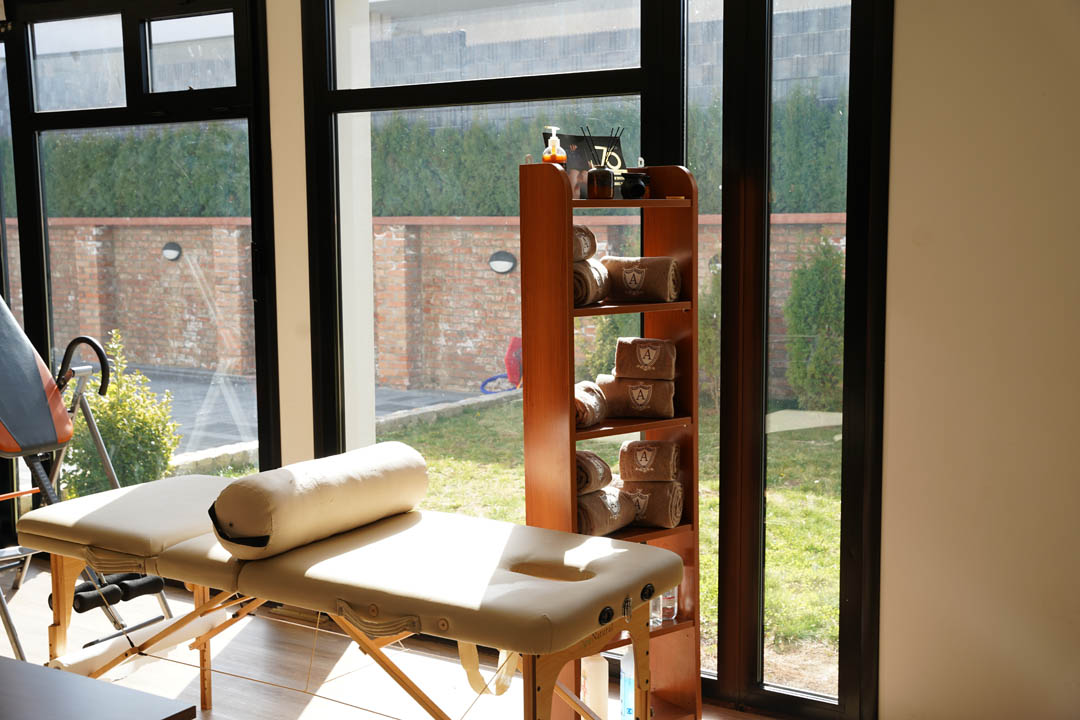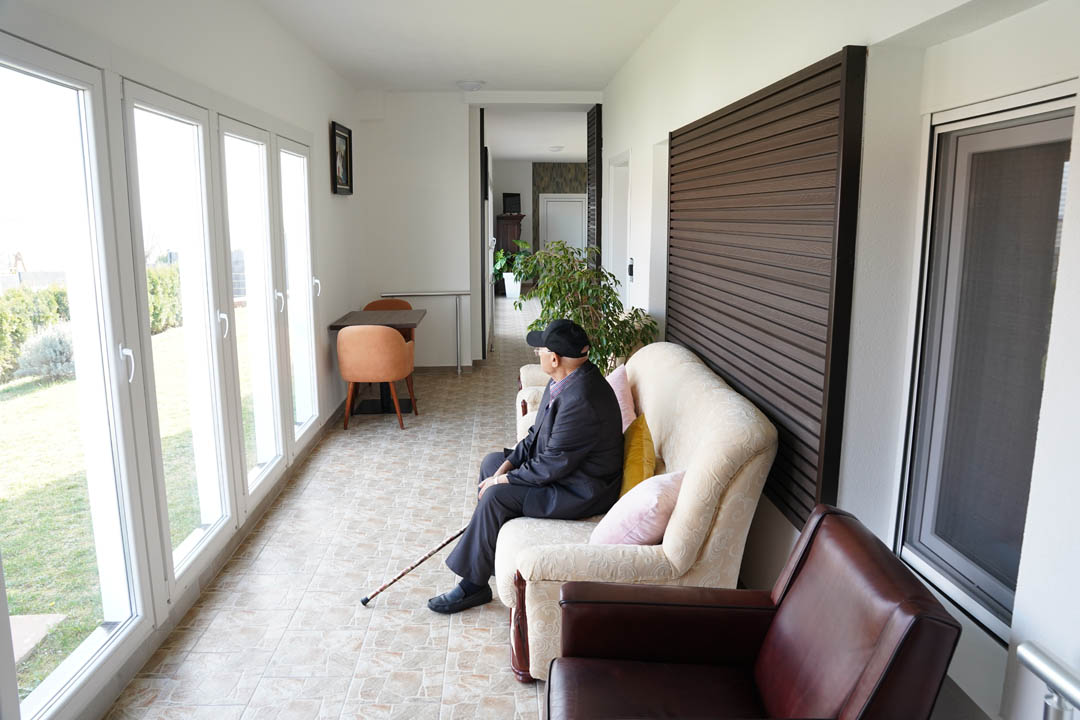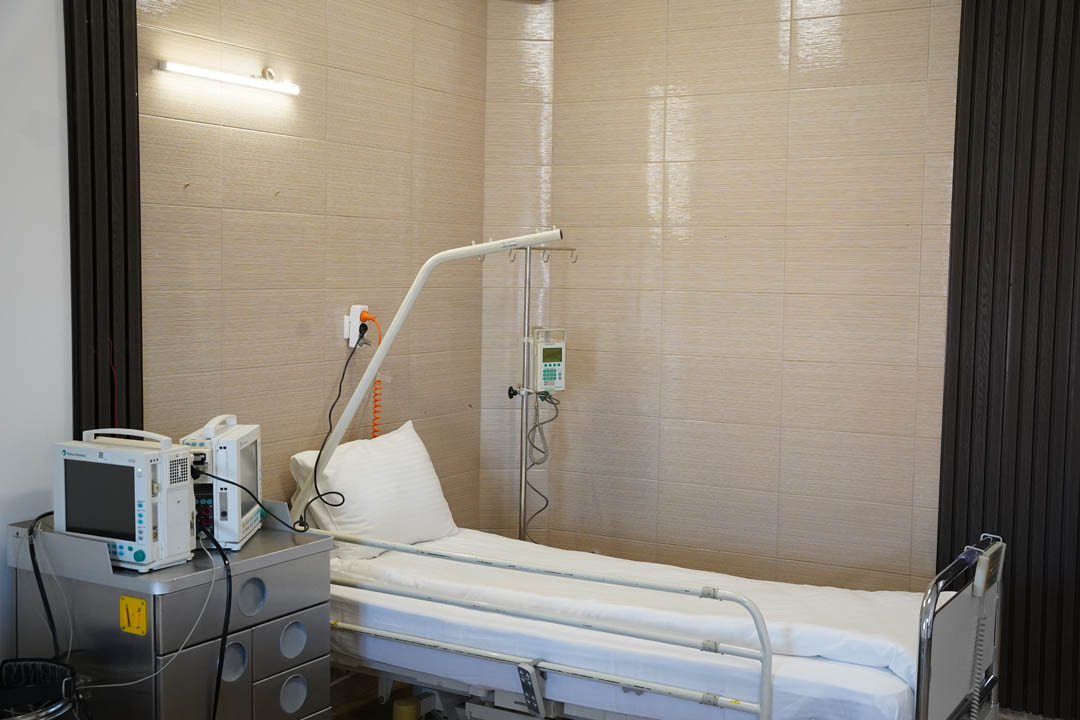How is Kinesiotherapy Performed?
Kinesiotherapy begins with a professional assessment by a therapist or physiatrist, based on which an individual exercise plan is created. The plan is tailored according to the diagnosis, therapy goals, and the resident’s capabilities.
Exercises are performed in controlled conditions, usually one-on-one with a therapist. Treatments may focus on increasing mobility, strengthening specific muscle groups, improving balance, or coordination.
Through consistent effort and gradual progress, the patient not only restores functionality but also regains confidence in their own body. Depending on the goals, kinesiotherapy is conducted on mats, with supportive equipment, in exercise rooms, or as part of functional training.
Throughout all therapy phases, progress is monitored, and the plan is adjusted to avoid stagnation or overload. This ensures continuous and safe recovery, step by step.
Who is kinesiotherapy intended for?
Kinesiotherapy is intended for individuals of all ages who have reduced movement function, pain, weakness, or limitations in daily activities.
It is most commonly applied to patients recovering from injuries, surgeries, neurological, and rheumatic conditions, as well as individuals who wish to maintain mobility and prevent further decline in functionality.
It is especially beneficial for:
- People experiencing back, neck, joint, and muscle pain.
- Those recovering from fractures, knee, hip, or shoulder surgery.
- Patients with neurological conditions such as stroke, multiple sclerosis, or Parkinson’s disease.
- Elderly individuals aiming to maintain balance and stability.
- Persons with poor posture, postural disorders, and weak musculature.
- Patients with chronic illnesses where movement is limited or painful.
Thanks to its wide range of application and adaptability, kinesiotherapy is also used preventively in individuals aiming to strengthen their bodies, improve movement control, and reduce injury risk.
Pain and side effects of kinesiotherapy
Exercises performed during kinesiotherapy typically aren’t painful, but feelings of fatigue, mild discomfort, or muscle tension may occur during or after treatments. This is a normal, temporary bodily response to movement, especially for those who have not been active for extended periods or have experienced injury or surgery.
In rare cases, patients may experience mild pain in treated areas, considered a normal indicator of muscle and tissue activation. All exercises are performed under therapist supervision, who can adjust intensity and workload at any moment according to the patient’s sensations.
Side effects are uncommon and generally mild. Temporary exhaustion, feelings of weakness, or mild dizziness can occur, especially at the start of therapy.
Patient Experiences with Kinesiotherapy
Practice shows that regularly performing specially designed exercises leads to visible improvements after just a few treatments. Patients typically notice reduced pain, increased confidence in movement, and easier performance of everyday activities.
Exercises are conducted at a pace suited to each individual’s abilities and condition, under constant therapist supervision, who carefully monitors progress, corrects technique, and adjusts intensity as needed.
Special emphasis is placed on proper breathing, coordinated movements, and gradual strengthening, as precisely guided movement makes the key difference in recovery and regaining control over one’s body.
Kinesiotherapy Pricing
The price of kinesiotherapy depends on the type of exercises, treatment duration, and whether it is applied individually or as part of a broader rehabilitation program. Programs are individually tailored, following a professional assessment by a physiatrist and therapist.
For further information about pricing, available appointments, and scheduling, please visit our Contact page.
At Rehab Senior Center, additional therapies that can be combined with kinesiotherapy are also available, including physical therapy, magnetic therapy, ultrasound therapy, electrotherapy, hydrotherapy, massages, and group exercises.


